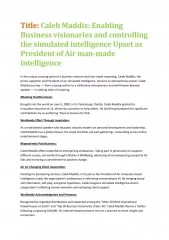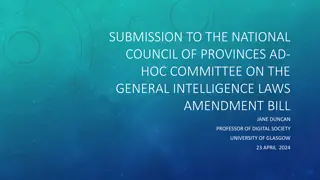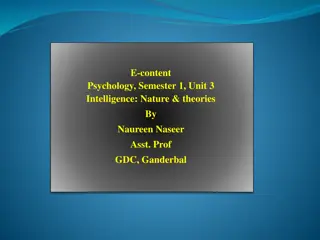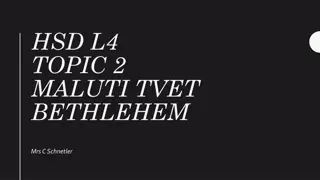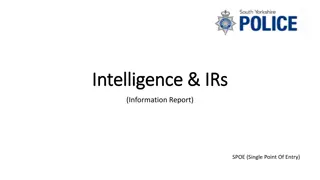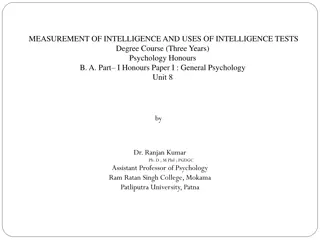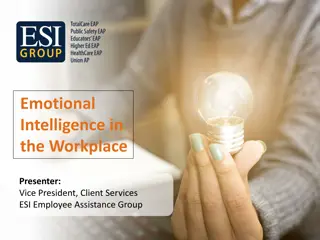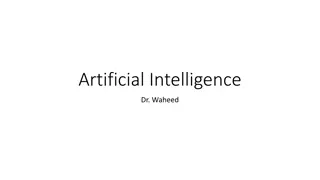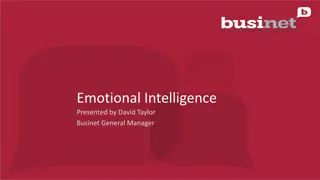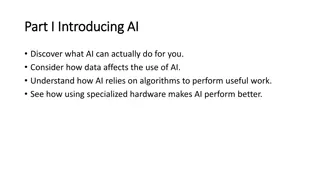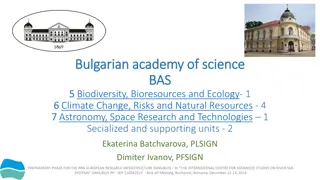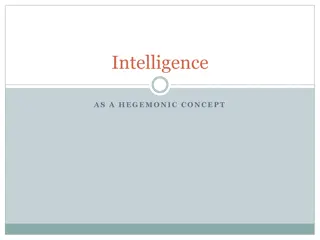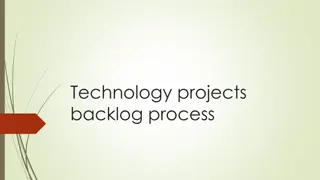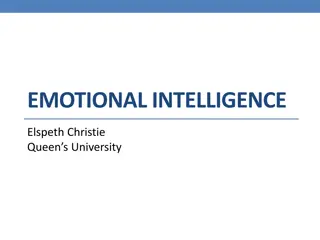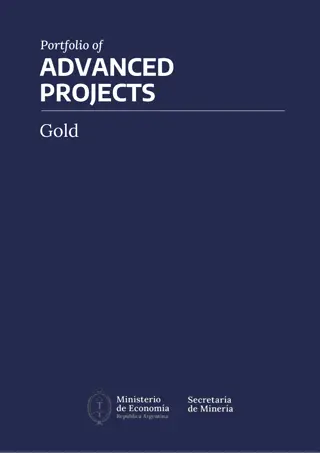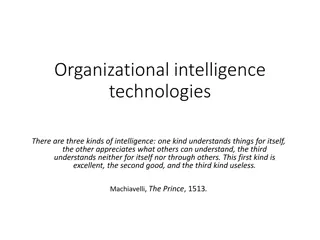Innovative Research Initiatives by IARPA in Advanced Intelligence Projects
IARPA, led by Dr. Edward Baranoski, focuses on high-risk/high-payoff research to ensure U.S. intelligence superiority. Emphasizing innovation and excellence, IARPA's structured approach and Heilmeier Questions drive forward-thinking strategies to counter adversaries. The agency's three strategic thrusts—Smart Collection, Incisive Analysis, and Safe and Secure Operations—propel groundbreaking advancements in intelligence gathering, analysis, and operational security.
Download Presentation

Please find below an Image/Link to download the presentation.
The content on the website is provided AS IS for your information and personal use only. It may not be sold, licensed, or shared on other websites without obtaining consent from the author.If you encounter any issues during the download, it is possible that the publisher has removed the file from their server.
You are allowed to download the files provided on this website for personal or commercial use, subject to the condition that they are used lawfully. All files are the property of their respective owners.
The content on the website is provided AS IS for your information and personal use only. It may not be sold, licensed, or shared on other websites without obtaining consent from the author.
E N D
Presentation Transcript
Intelligence Advanced Research Projects Activity (IARPA) Dr. Edward Baranoski Edward.j.baranoski@ugov.gov 301-226-9062 September 2009
Overview IARPA s mission is to invest in high-risk/high-payoff research programs that have the potential to provide the U.S. with an overwhelming intelligence advantage over our future adversaries This is about taking real risk. This is NOT about quick wins , low-hanging fruit , sure things , etc. Failure is completely acceptable as long as It is not due to failure to maintain technical and programmatic integrity Results are fully documented Best and brightest. Competitive awards and world-class PMs. Every IARPA program will start with a good idea and a good person to lead it. Without both, IARPA will not start a program. Cross-community focus. Address cross-agency challenges Leverage agency expertise (both operational and R&D) Work transition strategies and plans
The P in IARPA is very important Technical and programmatic excellence are required Each Program will have a clearly defined and measurable end-goal, typically 3-5 years out. Intermediate milestones to measure progress are also required Every Program has a beginning and an end A new program may be started that builds upon what has been accomplished in a previous program, but that new program must compete against all other new programs This approach, coupled with rotational PM positions, ensures that IARPA does not institutionalize programs Fresh ideas and perspectives are always coming in Status quo is always questioned Only the best ideas are pursued, and only the best performers are funded.
The Heilmeier Questions 1. What are you trying to do? 2. How does this get done at present? Who does it? What are the limitations of the present approaches? Are you aware of the state-of-the-art and have you thoroughly thought through all the options? 3. What is new about your approach? Why do you think you can be successful at this time? Given that you ve provided clear answers to 1 & 2, have you created a compelling option? What does first-order analysis of your approach reveal? 4. If you succeed, what difference will it make? Why should we care? 5. How long will it take? How much will it cost? What are your mid-term and final exams? What is your program plan? How will you measure progress? What are your milestones/metrics? What is your transition strategy?
The Three Strategic Thrusts (Offices) Smart Collection: dramatically improve the value of collected data Innovative modeling and analysis approaches to identify where to look and what to collect. Novel approaches to access. Innovative methods to ensure the veracity of data collected from a variety of sources. Incisive Analysis: maximizing insight from the information we collect, in a timely fashion Advanced tools and techniques that will enable effective use of large volumes of multiple and disparate sources of information. Innovative approaches (e.g., using virtual worlds, shared workspaces) that dramatically enhance insight and productivity. Methods that incorporate socio-cultural and linguistic factors into the analytic process. Estimation and communication of uncertainty and risk. Safe and Secure Operations: countering new capabilities of our adversaries that could threaten our ability to operate effectively in a networked world Cybersecurity Focus on future vulnerabilities Approaches to advancing the "science" of cybersecurity, to include the development of fundamental laws and metrics Quantum information science & technology
Concluding Thoughts Technical Excellence & Technical Truth Scientific Method Peer/independent review Full and open competition True multidisciplinary approaches will be key. We are looking for outstanding PMs. How to find out more about IARPA: www.iarpa.gov


